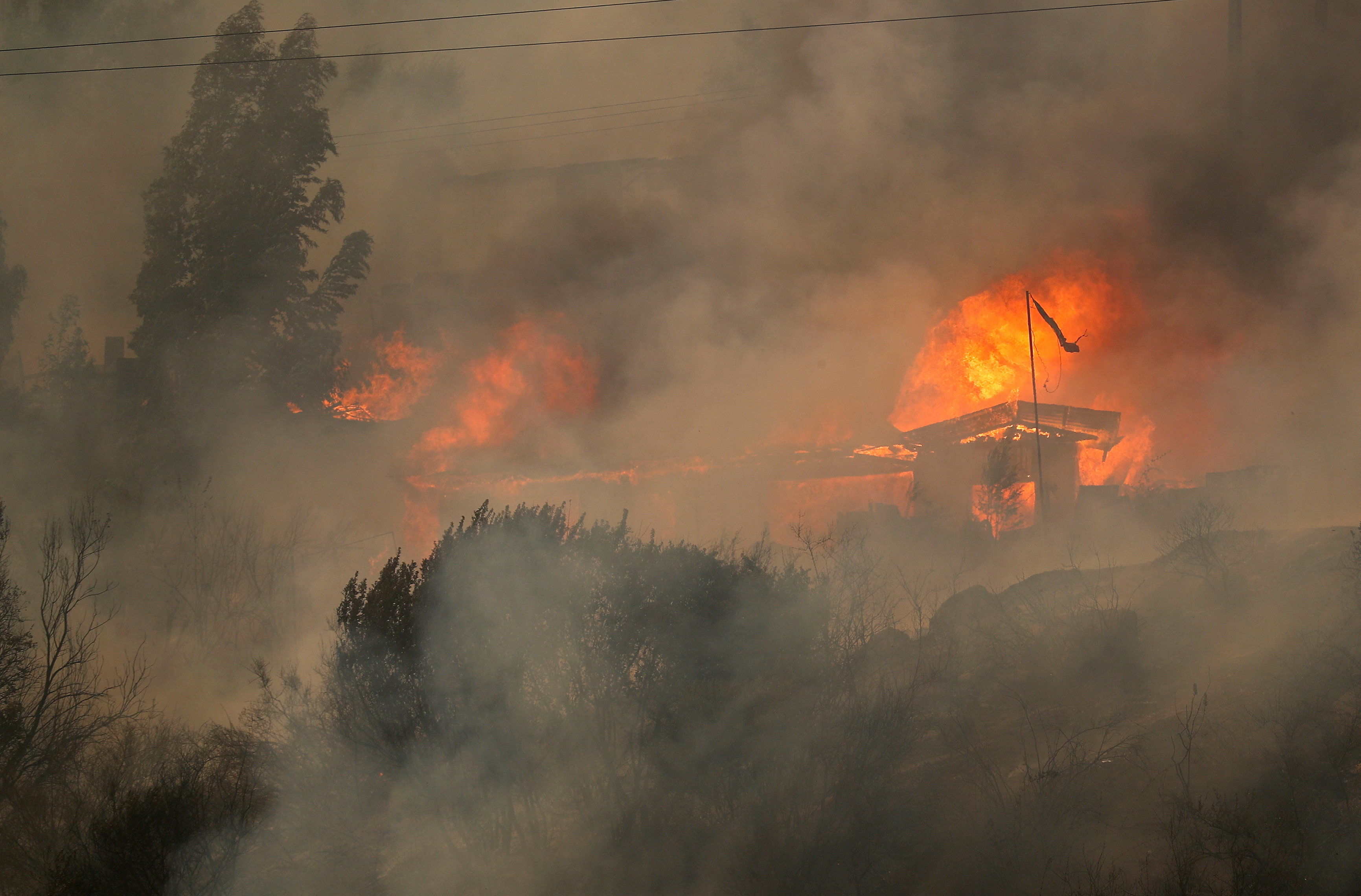Firefighters are wrestling with huge forest fires that broke out in central Chile on Friday. Officials have extended curfews in cities most heavily affected by the blazes and said at least 64 people were killed.
The fires have been burning with the highest intensity around the city of Viña del Mar, where a botanical garden founded in 1931 was destroyed by the flames. At least 1,600 people have been left without homes.
Flames and smoke on the eastern edge of the city have trapped some people in their homes. Officials said 200 people have been reported missing in Viña del Mar and the surrounding area. The city of 300,000 people is a popular beach resort.
Rodrigo Mundaca, the governor of the Valparaíso region, said on Sunday he believed that some of the fires could have been intentionally caused, replicating a theory that had also been mentioned on Saturday by the president, Gabriel Boric.
“These fires began in four points that lit up simultaneously,” Mundaca said. “As authorities, we will have to work rigorously to find who is responsible.”
The fires around Viña del Mar began in mountainous forested areas that are hard to reach. But they have moved into densely populated neighbourhoods on the city’s periphery despite efforts by Chilean authorities to slow down the flames.
On Saturday, Boric said unusually high temperatures, low humidity and high wind speeds were making it difficult to control the wildfires in central Chile, which have already burned through 8,000 hectares of forest and urban areas.
Officials are asking people in affected areas to evacuate their homes as quickly as possible, while those further from the fires are being told to stay indoors in order to facilitate the transit of fire engines and ambulances.
Curfews have been declared in Viña del Mar, and the neighbouring cities of Quilpé and Villa Alemana as part of efforts to prevent looting.
The fires broke out during a week of record high temperatures in central Chile. Over the past two months, the El Niño weather pattern has caused droughts and high temperatures in western South America that have also increased the risk of forest fires.




